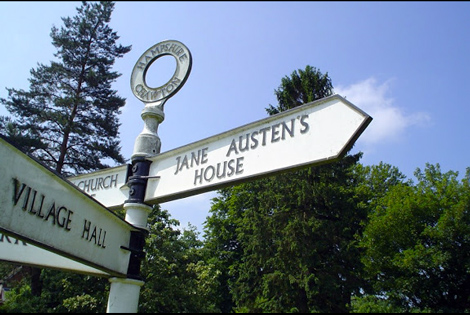
The Column of Lasting Insignificance: June 1, 2013
by John Wilcock
ALMOST FORGOTTEN by most people are the adventurous spacecraft, Voyagers 1 and 2, which set off into the unknown more than 35 years ago. But having traveled more than eight billion miles — at speeds of 30,000mph — they are still sending messages back every day, although not of the kind understood by the laymen among us (“mass, speed, and direction of low-energy charged particles, cosmic rays, and plasma waves”). The latest news is that both Voyagers are about to pass a milestone — from the heliosphere, the region still influenced by the sun, to interstellar space where nothing from earth has ever gone before.

The feeble signals from the plutonium-powered craft, which take 17 hours to arrive, will continue for another 12 years, after which they will go quiet, but “even with the power off the probes will continue their solitary march” explains Smithsonian’s Air&Space magazine. “The Voyagers will then have no mission other than to exist. Long after life on Earth ends, these spacecraft will fly on, proof — if there’s anything out there to recognize it — that a civilization on a small planet in the Milky Way galaxy once reached for the stars.”
WARP DRIVE is one those terms beloved of science fiction writers that imagines the possibility of traveling faster than light, a theory more or less at odds with the beliefs of a young Albert Einstein, then 26. ‘More or less’ is because few things are certain in the world of time-space and almost all of them are beyond the understanding of your humble reporter who confesses himself baffled by the concept of negative energy. This is the essential ingredient necessary to create the ‘bubble’ in space which would then be propelled at speed so fast that alpha centauri (4.3 light years distant — that’s 25.6 trillion miles) could be reached in a week or two (Don’t try this at home). Today’s Einstein would be the physicist Harold Sonny White who, according to Popular Science, is relying on something he calls a quantum vacuum plasma thruster (QVPT) which his NASA report would propel the spaceship (bubble) in lieu of a fuel source.
“Dr. White doesn’t think this a problem,” writes Konstantin Kakaes in PS. “When I ask him about it he says rather vaguely that a warp drive would work because of ‘an apparatus you have that’s creating the conditions that you need.’”
“Sonny is a pretty unique person,” says his boss John Applewhite, head of NASA’s Propulsion Systems Branch. “He’s definitely a visionary but he’s also an engineer. He can take his vision and turn it into a useful engineering product.”
The question this raises, of course, is whether this entire vision could ever produce a useful product or exceed the dreams of even the most imaginative sci-fi writers. It would be impossible to get into such a bubble and nobody would emerge alive.
One of the problems is that many scientists scoff at the possibility that negative energy, if indeed it exists, could be produced in sufficient quantity to propel anything. And PS comments: “(QVPT) would explode hundreds of nuclear weapons behind a spacecraft…(but) launching a spaceship loaded with hundreds of nuclear weapons is far from safe.”
THE BIG STORY as described in the recent issue of The New International magazine is HOUSING. They deal with the situation in various parts of the world that is almost always bad, dating from back in the 1980s when “capitalism went turbo….Led by Reagan and Thatcher and financial institutions like the IMF and the World Bank, this creed of greed has created global havoc.” When the period of fixed interest on their mortgages ran out, the mag writes, “the hapless homeowners” found the new interest rate was often double the old, due to the economic bubble they themselves were unwittingly part of creating….And mass pauperization would appear to be the plutocrats’ goal: it provides a dirt cheap labor force.” What the city of the future will look like, it predicts: “enclaves of obscene wealth, linked by sprawling slums. Many cities have this appearance already.” Among solutions, it suggests, would be to somehow remove homes as far as possible from “the manipulations of the marketplace” by controlling private rents to an acceptable level (good luck with that) and “stopping the hoarding of housing resources by elites.”
A parallel story offers a ray of hope from Spain, of all places. where the Platform for Mortgage Affected People (PAH) has set up 100 branches across the country dedicated to collectively fighting evictions by mass-blocking entrances, pressuring Congress, and proposing changes in applicable laws. Allied with their efforts has been the Assembly of Locksmith Professionals who have declared they will not change the locks on houses under foreclosure proceedings.
PRIDE AND PREJUDICE is 200 years old this year and visitors to Jane Austen‘s last home, the 17th century Chawton Cottage in Hampshire, into which she moved with her mother in 1808, are increasing day by day. Jane did most of her writing there and the desk at which she worked, along with other period furniture, letters, and the quilt on which she and her mother collaborated are on view.” Aspirations of the 19th-century middle class (neither rich nor poor) extend to getting their daughters married and thus ensuring long-term security for the entire family.
In Pride and Prejudice, which depicts the striving social life of Austen’s own era, the five daughters of a country gentleman and his wife cause particular anxiety, especially because headstrong Elizabeth, 20, insists on deciding her own destiny (an early example of women’s lib).

Elizabeth regards the apparent aloofness of their wealthy neighbor, Fitzwilliam Darcy, as excessive pride, and the manner in which her initial prejudice eventually gives way to a mutual love is the substance of the novel. It’s a great story and a gloriously satisfying movie, in the latest version of which Keira Knightly portrays Elizabeth.
Long regarded as one of the great works of literature, the novel — which worldwide has sold 20 million copies — has undergone endless discussion and interpretation, including sometimes ridiculous adaptations in recent years.
London travel agencies are increasingly directing fans to the Regency city of Bath to which Jane’s father took the family after retiring from Steventon in neighboring Hampshire where he had been rector for 35 years. This is the first place on the recent list offered by BBC History of other spots associated with Austen, including Sidmouth, the scene of Jane’s unfinished novel (she died in 1817 at 41). At this Devon resort, as at Lyme Regis 16 miles to the east, she would dress like all women bathers in long flannel robes and be wheeled out to sea in a wooden carriage to enter the water unobtrusively.
Also on the BBC’s route are Stoneleigh Abbey, near Kenilworth, for centuries the family seat of her mother and the model for Jane’s novel Mansfield Park; and the 13th-century ruins of Netley Abbey, near Southampton which were the model for her novel Northanger Abbey.
[JW is currently in Europe.]
